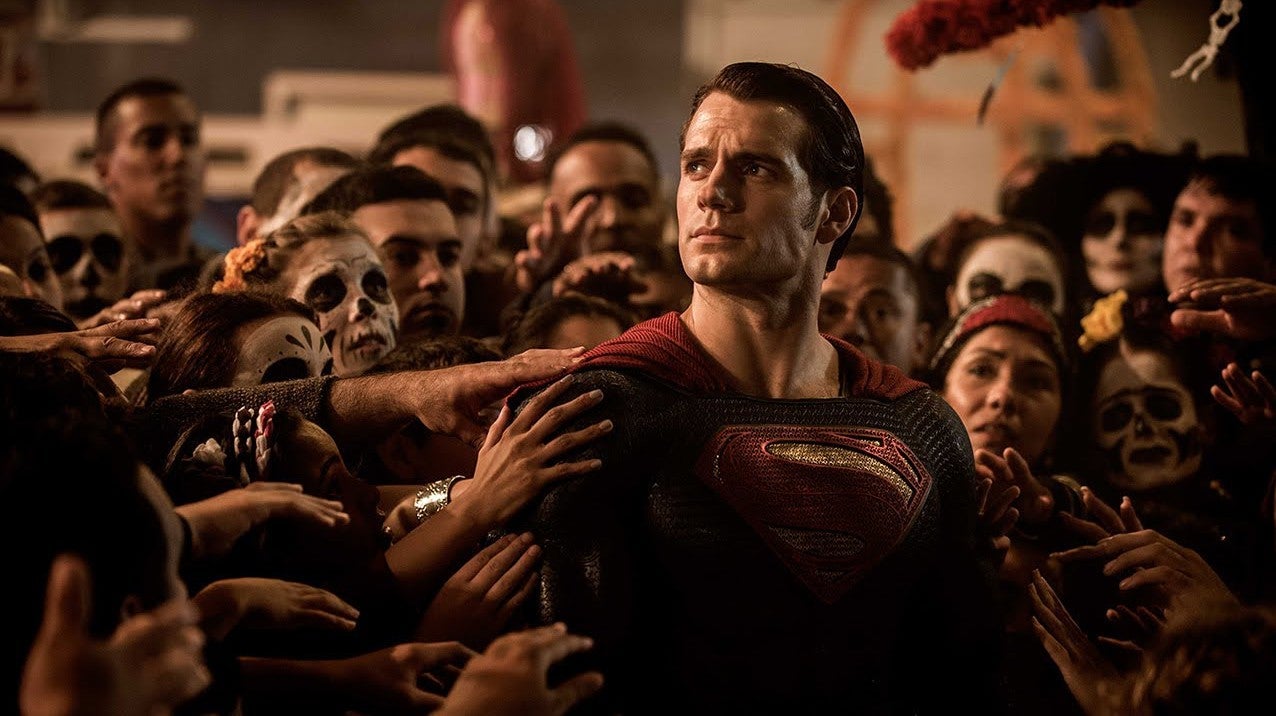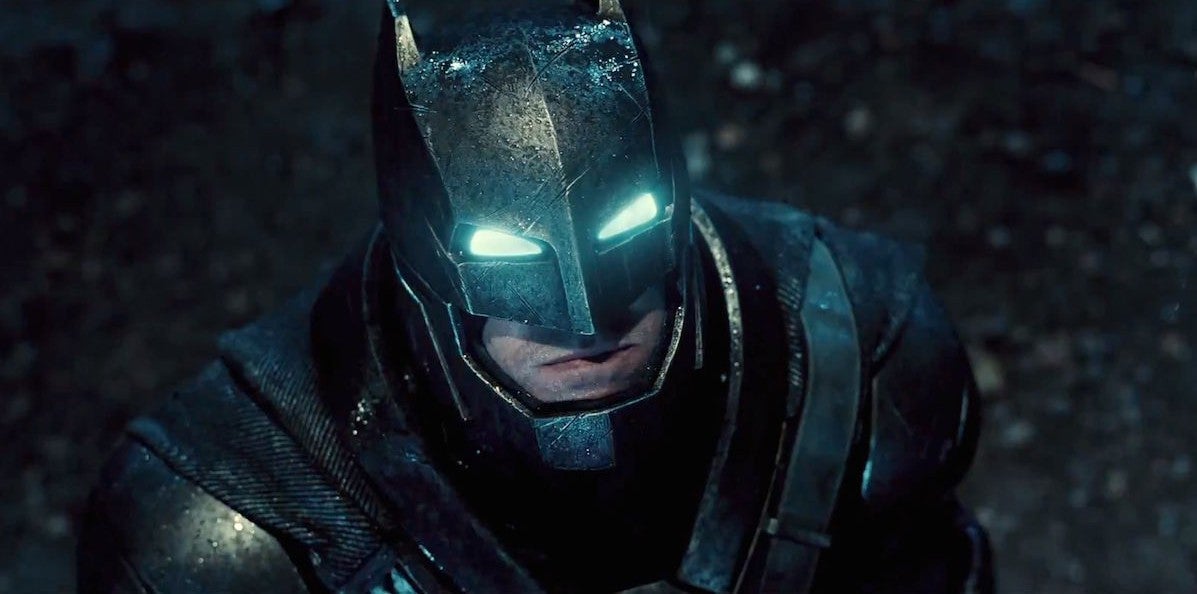I watched “Batman v Superman” at a 4D theater so you don’t have to
Not all heroes wear capes.


Not all heroes wear capes.
At least, that’s what I told myself as I entered the brand new “4D” theater at the Regal Cinemas in Manhattan’s Union Square to watch a movie about cape-wearing superheroes. The theater, New York’s first 4D-equipped space and the third in the United States (after Los Angeles and Chicago), opened specifically for Batman v Superman: Dawn of Justice this weekend. Tickets are nearly $30, about double the price of a 3D movie ticket in New York City.
What is a 4D theater, you ask? No, it does not exist in the theoretical fourth dimension (although that would be much cooler). Rather, 4D theaters are “the ultimate in state of the art technology delivering a fully immersive cinematic experience,” according to 4DX, the appropriately-named South Korean company that builds them. Inside every 4DX theater are motion chairs and a number of “environmental effects,” including rain, wind, lights, fog, and odors. Similar “sensory cinema” experiences have existed since the 1950s, though none as extensive as 4DX’s.
The operative word here is “immersive.” 4DX purports to further immerse you in your film experience with these physical effects. Why simply watch Superman get rained on when you can get uncomfortably wet at the same time? Why just commiserate with Batman when he’s punched in the back by an evil henchman, when you can get punched in the back by your very own chair? Genius!
While some of the effects were fun, in a dumb, gimmicky, never-again sort of way, the full experience actually does exactly the opposite of what 4DX intends it to. The annoying physical distractions that the auditorium inflicts upon moviegoers don’t immerse you in the movie; they completely take you out of it.
Here are some examples:
Rain
The most jarring effect was the simulated rain. By rain, I mean an uncomfortable spritz of water onto your head and face. It felt as though the person sitting behind me had just released a monstrous sneeze. Every time it rained in the film, I was spritzed.
Here’s the worst part, though: With each water spray, everyone in the theater would erupt with surprised laughter. I didn’t blame them. That is a natural, human reaction. But the only scene I felt immersed in was that of a throng of wet filmgoers cackling in unison.
For those who prefer to stay dry, there’s a console on your armrest to toggle the water on or off. But if you’re paying $30 for a 4D movie, you might as well get the full experience. And in any case, there’s no switch to turn off the crowd’s immersion-destroying laughter.
Motion seats
To see Batman v Superman in a 4D theater is to be an adult forced to ride the lamest roller coaster at an amusement park. You know, the ones that sort of just sway side to side and twirl around in circles.
Every car chase, every time Superman flew or Batman used his grappling hook, the chair would attempt to move in a similar fashion. At times, it would start rumbling for no apparent reason, like a surprise shiatsu massage performed by an arm wrestler.
The coup de grâce (literally?) was when someone on screen was shot with a gun: Something in my chair punched me in the back. Nothing says immersion like being shot.

Wind
The least intrusive effect was probably the “wind.” A row of large fans line both sides of the auditorium, and they blow air onto you every time wind is depicted in the film. When a helicopter is landing in the film, these ceiling fans go crazy. When Bruce Wayne sulks through a field, they offer a gentler, almost-soothing breeze. I didn’t mind it, as far as immersive weather experiences go.
There are also two small ports in your chair that shoot a quick gust of air by your ears at certain points, like when Superman lifts off. These reminded me of that unsettling puff of air that eye doctors use to test for glaucoma.
Lights
There are large strobe lights around the theater that flare every time lightning strikes in the movie. They also seemed to go off at random times for reasons unclear. Each time these lights flickered on, my eye was drawn away from the screen and toward the colored pattern on the theater’s walls that the lights illuminated. Pass.
Smoke (or was it supposed to be fog?)
After some explosions in the film (there were many), a wisp of gray vapor would seep out from under the screen, before dissipating quickly. 4DX’s website says that this effect is fog, but it was intended to simulate smoke, so we’ll call it smokefog. It was a slightly disconcerting thing to see in a theater, even knowing it’s not real. If actual smoke had filled up the auditorium, I might not have been able to tell the difference.
Smells
There were allegedly various odors dispersed throughout the film, but I didn’t notice any of them. Perhaps I had a stuffed up nose. As I left, I heard someone say the theater smelled bad.
Conclusion
A movie theater is a sacred space for a lot of people. It is for me. To get existential for a moment, watching a film at a theater allows you to suspend your existence for two hours. You’re in a dark box, staring at a screen. You forget that you’re even there, or that there even is a “there.”
The best movies force you out of your body. For a moment, you don’t think about your position in space or in time, and instead focus only on the cinematic world before you. That’s why despite the rise of home video and now streaming options, a lot of people will still pay a small fortune to see a movie in theaters.
A 4D movie takes a pickaxe to that part of moviegoing. By inflicting physical sensations upon you, it drags you out of that fugue-like state and back into the here and now.
And the reality it brings you back to resembles an amusement park ride, not a movie experience. For some people, that’s fine. That can be fun in its own right. Similar “4D” rides have been around for decades at theme parks, zoos, and science centers.
But for those seeking real immersion in a cinematic experience, 4D is at best an expensive distraction. Batman v Superman was the least immersive movie experience of my life, and all it left me with was wet hair and a sore back.